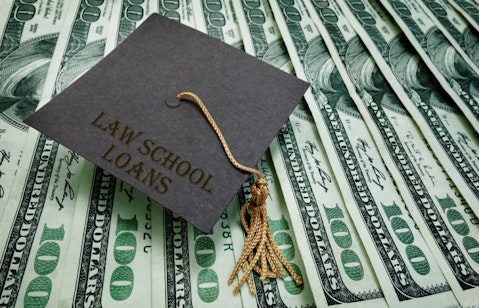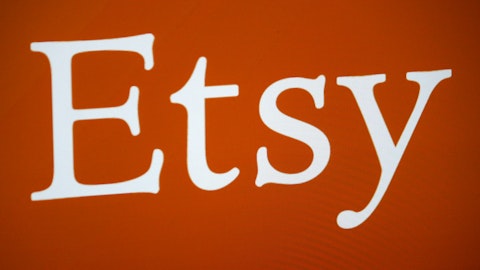If you recently graduated college and are finding yourself seeking the easiest US states to pay off student loan debt, you’re not alone. According to recent statistics aggregating the collective debt of over 44 million borrowers, Americans owe more than $1.4 trillion in student loans. That eye-popping figure is more than all U.S. credit card debt combined by nearly $620 billion. More specifically, someone that graduated in the class of 2016 owes an average of $37,172 in loans–a figure that has jolted up by six percent from the previous year’s figures. These stats, among others, make finding an affordable postgraduate lifestyle of paramount importance to those fresh out of college.
Let’s take a more in-depth look at this student loan debt epidemic. On average, graduates make payments of about $350 per month in the lengthy process that is student loan repayment. This figure, though, may skew the picture slightly, as median monthly student loan payments are more in the neighborhood of $200, indicating that higher-than-average debts may be warping the overall degree to which graduates are in debt. Even with these markedly lower monthly student loan figures, however, many still struggle to make these payments, with student loan delinquency rates–figures tracking those over 90 days delinquent or in default–above 11% at last glance.

Copyright: andresr / 123RF Stock Photo
It gets worse. Those looking for relief are going to be pretty hard-pressed in the way of finding it. Of the above-cited 44 billion Americans in student loan debt, just over 550,000 have one or more approved public service loan forgiveness (PSLF) employment certification forms. Put plainly, for the majority of debtors, if you’ve got outstanding loans, you’ve gotta pay them off yourself.
Some more statistics:
Of the near trillion and a half dollars in outstanding student loans, nearly 950 billion of them take the form of direct loans, taken out by 31.5 million borrowers, while $335.2 billion dollars in the form of Federal Family Education Loans (FFEL) are currently owed by 16.4 million borrowers.
These loans run the gamut, ranging from Stafford combined loans–the most popular, with 32.6 million recipients and $706.2 billion in outstanding debt–to Grad PLUS loans, which are only used by 1.1 million borrowers and account for a “mere” 53 billion dollars in debts.
Though nearly $500 billion of outstanding student loans are currently in repayment by some 15.7 million borrowers, over $320 billion of loan payments are actively going unpaid, in statuses ranging from deferment and forbearance to grace periods or default.
As far as payment plans are concerned, there is some good news in the sense that over 13 million borrowers are on track to pay off their loans within 10 years, as opposed to the less than 2 million that are on long-term plans. Another $200 billion of outstanding loan payment plans are made up of income-dependent schemes, in which 5.5 million borrowers are enrolled. This fact–many loan payback plans are dependent upon how much a borrower earns–makes selecting the right state in which to live as a postgraduate even more pertinent. The compensation provided to employees in certain states far surpasses that seen in other states.
By the same token, cost of living can’t be ignored in the push-pull equation that dictates the likelihood of a postgraduate not drowning to death in the eyeball-level debt in which they so frequently find themselves after college. In the interest of gauging these two factors–how much you make versus how much you pay–and how they figure into a person’s ability to pay back student loans, researchers measured this data for 49 of 50 states (sorry North Dakota) as a means of determining student loan affordability by state.
“Affordability,” so that we’re clear, is defined as loan payments “equal to 10% or less of an individual’s monthly disposable income.” And–in the interest of being really clear–disposable income is the money left over after you finish paying tithes to Uncle Sam.
After researchers found the average disposable income using wage data from each state, they compared that figure to normal monthly debt payments in the year 2014 (using average, not median), based on a 10-year repayment plan with 4% interest rolled in.
What resulted from this was an economic snapshot of life in each state, and an eye-opening glimpse into viable and not-so-viable options for future graduates. Taking the highest-ranking states with respect to affordability, we’ve compiled a list of the 7 easiest states to pay off student loan debt. If, however, you’re determined to live in whatever state you damned well please, regardless of cost of living, perhaps this list of the easiest and best-paying jobs in the world might serve as a good starting point in your quest. Whatever your goals, take a gander at this list of states where the livin’ is easy for student loan borrowers and PUT THE SCALPEL DOWN as you do so. Nobody’s selling their kidneys on the black market today. Now, let’s see our list of easiest US states to pay off student loan debt.
7. Arizona
Average Student Loan Balance:$22,609
Ratio of Student Payments to disposable income: 14.22%
Though Arizona, the number 7 on our list of easiest US states to pay off student loan debt posted an average annual wage slightly lower than the national average, the state more than makes up for this $3,000 discrepancy with an average student loan balance $15,000 below the average debt of a student graduating in the class of 2016. With that kind of financial wiggle room, the prospect of emerging from a canyon of student loan-induced debt becomes much more less daunting almost instantly.

Africa Studio/Shutterstock.com
6. Oklahoma
Average Student Loan Balance: $23,430
Ratio of Student Payments to disposable income: 14.21%
With a lower average annual wage and higher average student loan balance than Arizona, it might be hard to fathom how Oklahoma could seemingly leapfrog its way into the sixth place on this list of easiest US states to pay off student loan debt. With a lower state income tax floor, however, Oklahoma serves as a more attractive landing spot for cost-conscious graduates, if only by a hundredth of a percentage point. These differences add up, though, making Oklahoma one of the easiest US states to pay off student loan debt.

Ljupco Smokovski/Shutterstock.com
5. Colorado
Average Student Loan Balance: $25,064
Ratio of Student Payments to disposable income:13.86%
When it comes to Colorado’s affordability, the difference is in the higher wages. With an annual income nearly $2,000 higher than the national average ($49,630), state residents are able to take advantage of a slightly cheaper than average cost of living and pocket the difference in annual wages to the tune of nearly $200 a month. That goes a long way toward meeting monthly student loan payments whose national median is roughly the same amount. No wonder it’s on our list of easiest US states to pay off student loan debt, right?

michaeljung/Shutterstock.com
4. Washington
Average Student Loan Balance: $24,804
Ratio of Student Payments to Disposable Income: 13.33%
Washington effortlessly one-ups Colorado for fourth place by offering residents lower levels of student debt along with higher annual incomes. Although the cost of living is about the same as what you might find in other parts of the country, wages in Washington are nearly $5,000 higher than the national average, making the state a particularly attractive destination for post grads. All of this amounts to a fairly painless bill pay experience at the end of each month for residents in the Evergreen State.

Copyright: zimmytws / 123RF Stock Photo
3. Wyoming
Average Student Loan Balance: $23,708
Ratio of Student Payments to Disposable Income: 13.31%
Though Wyoming residents don’t enjoy quite the same lavish annual wages as their counterparts in Washington, they were able to eek out a lower ratio of student payments to disposable income as a result of a combination of factors. For one, the state’s cost of living is well below the national average, providing residents more in the way of disposable income. What’s more, college itself isn’t all that expensive. Public universities in Wyoming, and annual in-state tuition in general is the lowest of any state in the nation with costs just north of $5,000 annually. When you put all of these factors together, it’s little surprise that Wyoming made it into the list of the top three easiest US states to pay off student loan debt.

Rawpixel/Shutterstock.com
2. New Mexico
Average Student Loan Balance: $18,969
Ratio of Student Payments to Disposable Income: 12.22%
Where student loans are low in Wyoming, they’re even lower in New Mexico, the number two on our list of easiest US states to pay off student loan debt. Average student loan balances for graduates from the Land of Enchantment are over $17,000 lower than what most graduates exit college with. Add to that equation affordable living costs and floor-level state income taxes, and you’ve got a perfect storm for paying off student loan debt.

zimmytws/Shutterstock.com
1. Utah
Average Student Loan Balance: $18,921
Ratio of Student Payments to Disposable Income: 10.89%
Much like a debate between two cut-throat politicians, just when you thought that average student loan balances couldn’t go any lower, you encounter Utah, the first one on the list of easiest US states to pay off student loan debt. At 10.89% Utah’s ratio of student debt to disposable income comes closest to the 10 percent threshold established by the federal government. A lot of this is due to the affordable in-state tuition (currently fourth-cheapest in the country) that residents enjoy. On the other hand it reflects a fiscally conservative culture that is rampant in the state. Both the percentage of Utah graduates with student debt and the amounts borrowed by Utah graduates, just under $19,000 on average are the lowest in the nation. Whatever it is, if you’re looking for the crème de la crème among the easiest U.S. states to pay off student loan debt, look no further than Utah.

Copyright: zimmytws / 123RF Stock Photo





